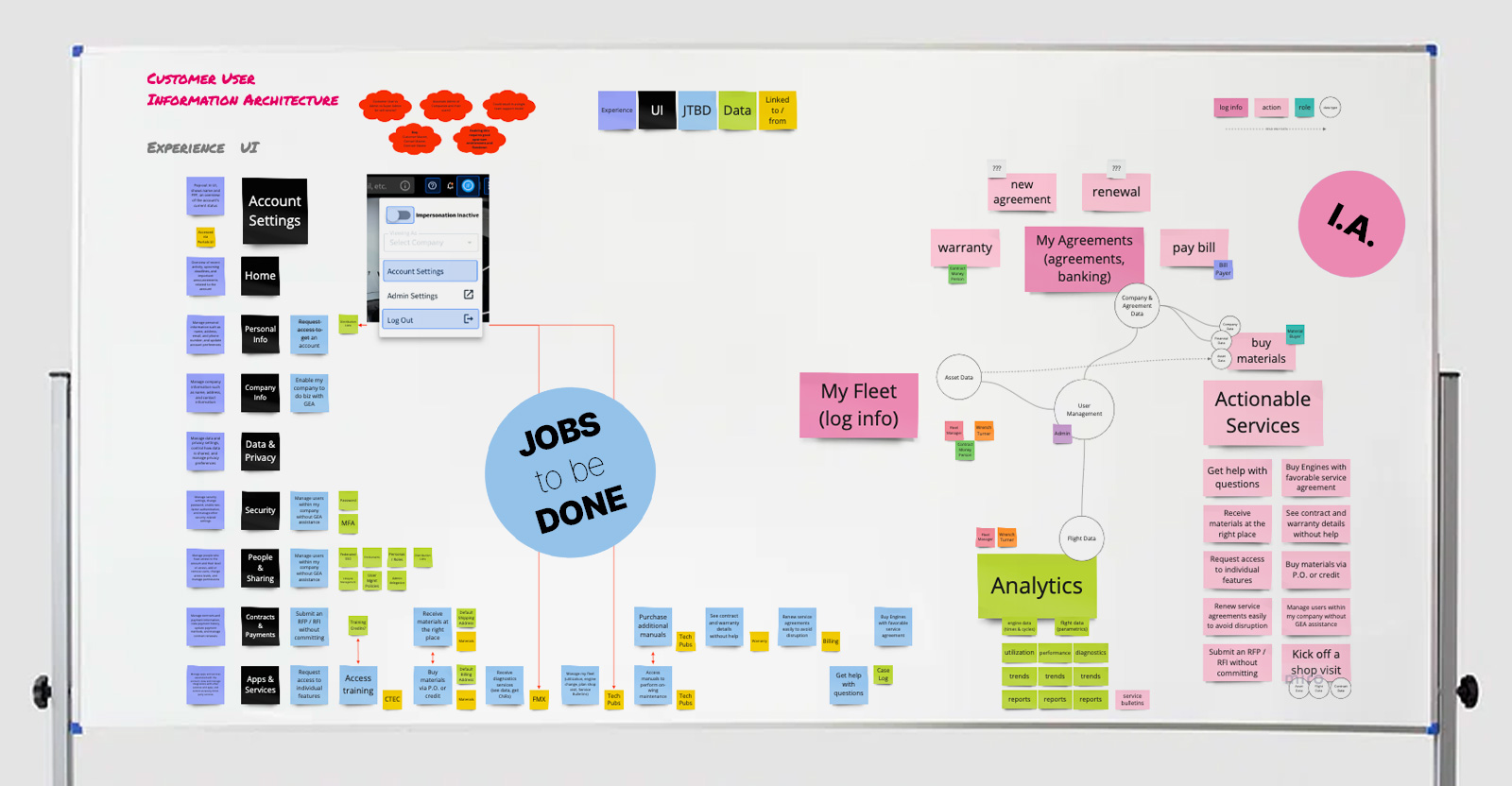

In 2023 I worked closely with cross-functional leadership team in a customer journey mapping and customer experience maturity program. We unpacked VOC together, and built a journey map showing customer touch points, pains, and areas of opportunity. As a result, small teams were formed to work the largest areas of opportunity. At this point the global aviation market had started a rapid transformation, seeing an unprecedented number startup airlines buying small fleets of aircraft. Partnering closely with each customer, their engineering and operations teams, and understanding each of their needs in depths poses a massive challenge of scale.

The journey from purchase to use of an aircraft engine is no small feat. EIS is a complex process comprised of nearly 200 technical and administrative subtasks. It is time consuming and confusing, even for fully supported customers. The challenge of scale means that this process which traditionally was orchestrated by an on-site customer liaison would benefit the customer and the business from customer self service. The manpower required is unsustainable, and customers don’t want to wait, or share those human resources.
My role in entry into service process improvement as an experience architect was threefold; understand and measure customer expectation, improve the process, enable self service.
Prior process management looked like measuring customer readiness by way of KPIs for key internal steps in the process. Shortening process times should lead to customer success. More materials, training, and tools would make the customer more ready to face the challenges of stable operations. But, how does the customer feel about that? Discovery research and surveys before, during and after the process allow for evaluation of customer satisfaction from an outside-in perspective. Some customers have different goals for a product than the manufacturer of said product. Dissatisfied customers tend to reach out more often with questions and complaints, which equates to higher support cost. They are less likely to purchase more products and services if other options are available. They are also more likely to talk within the industry about any challenges and missteps faced. With a new customer, you only have one chance to make a good first impression. My coaching, research, and listening strategy aimed to put the focus back on customer success.
Once goals are clearly set, process improvement can begin. The ideal future state is to make things so simple and repeatable that customers can complete the process with little or no assistance, with customer support communications becoming more cheerleading and celebration than triage of problems. Through customer insights and working across multiple product lines, I was able to help orchestrate a measurement structure by which to evaluate a reinvented entry into service approach.
Clearer customer benefits, training, and collaboration leads to:

One of the biggest barriers to self service in the entry into service, as well as the 30+ years a customer will continue to utilize and service those assets is having the means access their data, purchase materials and services, and get training. Most of the services and tools needed for a customer to get what they need exist and provide a satisfactory experience. Knowing where to go, how to get in, and how to get the most out of these experiences is a major problem. Customers experience long lead times to access, are asked to complete repetitive tasks, and are exposed to a good deal of what’s going on behind the scenes in a way that doesn’t benefit them.
>
As a customer, I'm here to find solutions that meet my business goals. I want to engage easily and buy engines with favorable service agreement. I need to buy engines and materials via purchase order or credit. My expectation is to see GEA as a trusted partner. I expect Instant access to digital tools to transact & administer my people, onboarding them in moments. This will enable us to transact seamlessly, and we'll provide additional information as we work together with you.
Longstanding streams of VOC and new discovery allowed me to formulate a series of more specific problem statements, and draft a vision. Let’s pull apart the problems standing in the way of the expected customer experience. Processes to provide customer users access to services they are entitled to is cumbersome, involves many technologies, teams, and handoffs. Data quality and ability for customer to provide ”just right” amount of company and personal information at the right to do their job. Processes lag customer expectations set by other experiences in and outside of industry.
If we work to improve the process, we should see the following when customer users are granted appropriate access to a usable experience on a swift timeline:
To measure success of improvement efforts, I orchestrated a series of surveys and analytics to account for the above spanning 8 transactional experiences, 10 teams, and just shy of 20 systems. I worked with UX research practitioners to hone goals, questions, and verbiage. Then, I garnered cross-functional alignment around a prioritization framework that would use these metrics as inputs to their roadmaps, and processes for reaching out and fostering relationships with dissatisfied users.
The business looks forward to continuous improvement of setup processes that will delight customers, and the ability to measurably account for increases in revenue and decreases in support cost tied directly to customer experience.